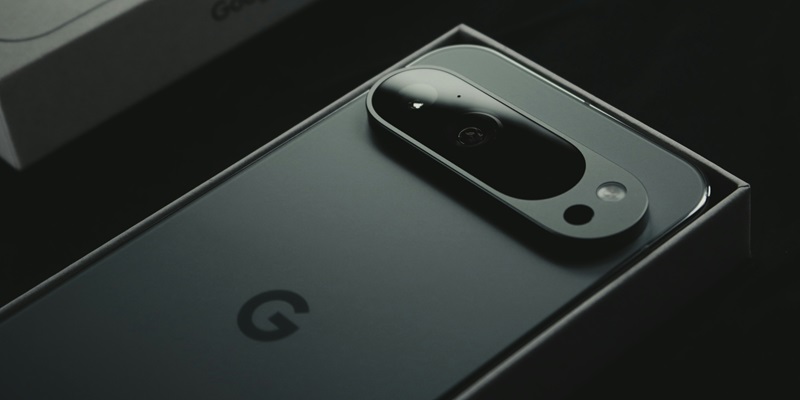The Google Pixel 9 Pro Fold has recently drawn significant attention in the tech community, primarily due to its remarkable camera capabilities and display performance. Analyzing the device from various aspects reveals a compelling mix of advancements and minor drawbacks. One of the most notable features is its camera system, evaluated by DxOMark, which excels despite the adoption of slightly smaller sensors in two of its three rear cameras compared to its predecessor. This prowess is evident through the Pixel 9 Pro Fold’s 48 MP f/1.7 main camera with a 1/2 inch sensor, a 10.8 MP f/3.1 telephoto camera with a 1/3.2 inch sensor and a five-fold optical zoom, and a 10.5 MP f/2.2 ultra-wide-angle camera with a 1/3.4 inch sensor. These changes, particularly in the telephoto and ultra-wide-angle cameras, result in a superior camera system that has earned 141 points in DxOMark’s stringent analysis. This score outshines competitors like the Samsung Galaxy Z Fold6 and places the Pixel 9 Pro Fold at the top of DxOMark’s rankings for foldable camera systems.
Camera Capabilities
The camera system of the Pixel 9 Pro Fold is lauded for several attributes, including its fast and precise autofocus, accurate color reproduction, and exceptional auto-exposure control. These elements combine to deliver high-quality images, even under challenging conditions. Google’s camera software also adds to the reliability of the device by effectively handling difficult lighting scenarios. However, the review does highlight some weaknesses. One major criticism is the camera’s relatively low dynamic range, which affects its performance in high-contrast environments. The detail captured in such scenarios can be moderate, failing to match the lofty expectations set by the other aspects of the camera system.
Telephoto capabilities, an essential feature for many users, are another area where the Pixel 9 Pro Fold displays mixed performance. While the five-fold optical zoom is a noteworthy advancement, the telephoto camera often falls short in low-light conditions, producing photos that lack detail and saturation. These issues are significant when compared to other key metrics of the camera. Despite these weaknesses, the Pixel 9 Pro Fold still outclasses many of its rivals, holding its position firmly within the market.
Display Performance
On the display front, the Pixel 9 Pro Fold’s 8-inch foldable screen has numerous features that stand out. The display offers a remarkable resolution of 2,152 x 2,076, a refresh rate of 120 Hz, and full-surface brightness of 1,600 nits. Moreover, it boasts a peak HDR brightness of 2,700 nits. Despite these stunning specifications, the display scored 152 points in DxOMark’s display analysis. This score positions the Pixel 9 Pro Fold slightly behind the Samsung Galaxy Z Fold6, which scored 154 points, and significantly below the Google Pixel 9 Pro XL, which achieved 158 points. Areas for improvement include the screen’s maximum brightness when displaying SDR videos.
The display of the Pixel 9 Pro Fold, while generally commendable for its color accuracy, especially in "High Brightness" mode, has room for refinement. Accurate skin tone rendering is one praised aspect, along with the screen’s responsiveness and precision. However, these strengths do not entirely mitigate the issues related to brightness.
Overall Rankings and Market Implications
The Google Pixel 9 Pro Fold has recently captivated the tech world, mainly due to its impressive camera capabilities and display performance. A closer look at the device reveals a blend of significant advancements and a few minor drawbacks. One of its standout features is the camera system, thoroughly evaluated by DxOMark. Despite the switch to slightly smaller sensors in two of its three rear cameras compared to the previous model, the Pixel 9 Pro Fold delivers exceptional performance.
The phone boasts a 48 MP f/1.7 main camera with a 1/2-inch sensor, a 10.8 MP f/3.1 telephoto camera with a 1/3.2-inch sensor and five-fold optical zoom, and a 10.5 MP f/2.2 ultra-wide-angle camera with a 1/3.4-inch sensor. These adjustments, especially in the telephoto and ultra-wide-angle lenses, create a superior system that has earned 141 points in DxOMark’s rigorous evaluation. This impressive score surpasses competitors like the Samsung Galaxy Z Fold6, positioning the Pixel 9 Pro Fold at the top of DxOMark’s rankings for foldable phone camera systems.

